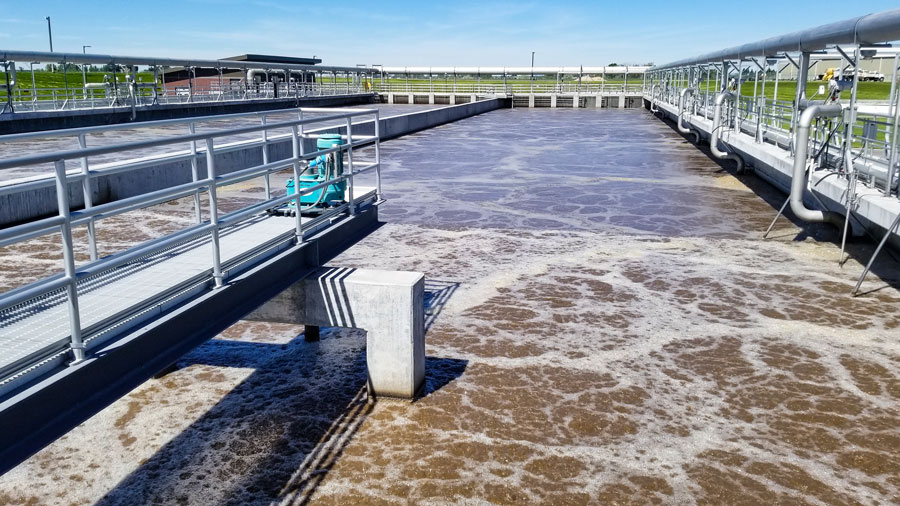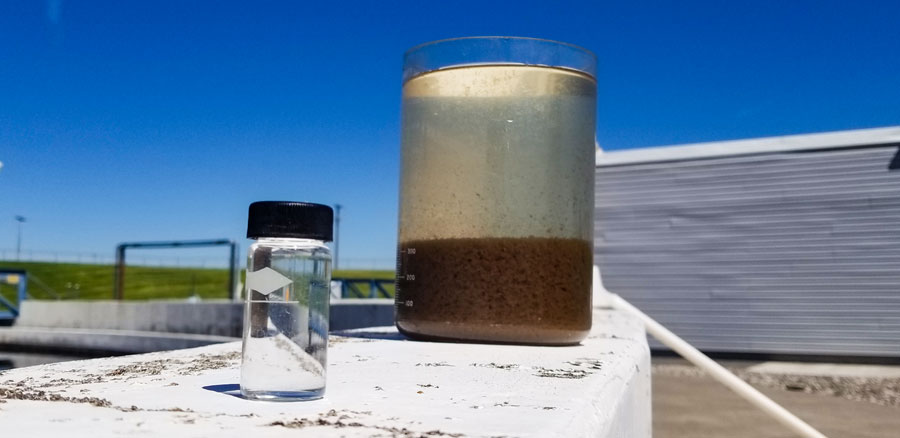Out of sight, but not out of mind. What treasures end up at the wastewater treatment plant?
Published at | Updated atIDAHO FALLS — Wedding rings, toys and dentures. You might be surprised at some of the things that make it down the drain and end up at the Idaho Falls Wastewater Treatment Plant.
The plant handles 9.5 million gallons of wastewater per day from the City of Idaho Falls, the Iona/Bonneville Sewer District and Ucon.
“We have over 300 miles of pipe that actually bring wastewater to this particular facility,” Public Works Director Chris Fredericksen says.
What enters the wastewater treatment plant is vastly different from what comes out and, at the end of the process, human waste is hardly considered “waste” anymore; rather, “biosolid.”
“Just like newspapers, aluminum cans, plastic goods, we’re recycling the water that’s been used, so it can be reused again,” Wastewater Division Foreman Darrin Lords says.
When water enters the plant it starts at the primary clarifier. The flow goes through clarification, digestion, fermentation, and aeration to name a few of the processes before ending up at its last stop– the secondary clarifier.
Here are some key things that happen before the wastewater is completely clarified and ends up back into the river.

Screening
All of the wastewater that comes to the plant is screened. Many items found in this process are what journeys down the drain with human waste and other liquids.
This is where flushable wipes, toys, jewelry and grandpa’s teeth that accidentally fell into the toilet bowl end up.
“You’d be surprised at how much we take out of here,” Wastewater Division Superintendent Carl Utter says.
When solid items come off the screener, they’re dumped in the trash and sent to the sanitary landfill.

Although workers see a lot come through during screening, finding specific items is difficult.
“The chances of us finding an item being lost is very slim,” Lords says. “Somebody flushed their earring down one time, and they found it in the collection system … We’ve found class rings (and) been able to return those, and one time a debit card.”
But, those are the only items Lords recalls after working at the plant for 30 years.
The Activated Sludge Aeration process
Over on the aeration side of the treatment plant, the smell really isn’t that bad. Through the treatment plant’s diffused aeration system, a new upgrade in 2015, harmful elements like ammonia and phosphorus are virtually eliminated from biosolids. Specialized bacteria that feed off the biosolids are used during aeration.
“When I started in the wastewater field, they said this couldn’t happen — you wouldn’t be able to process phosphorus and ammonia like this. It used to be a chemical (additive) that you would have to do,” Lords says. “What they do is take ammonia, convert it to nitrogen gas and release it out in the atmosphere. The microorganisms are feeding off the waste, just like we would feed off a pizza and hamburger. That’s where they get their energy.”
Lords says the new system is much more efficient and he believes it’s the best investment the city of Idaho Falls had made.

Dilution not the solution
Lords says in the early days of wastewater treatment, it was believed that dilution was the solution to cleaning out sewage.
“It used to be with Idaho Falls, you would have an outhouse with a line going through the river that would drop right into the river,” Lords says.
But as time went on, Lords says, it was proven that pollutants were harming the river.
“The pollutants going in the river has a great impact on aquatic life, plant life and the life of the river’s retrieving streams,” Lords says.
With today’s system, 95 percent of pollutants are removed from the wastewater coming into the plant, according to Lords. Water at the end of the treatment is clarified, but not purified or fit for consumption.

“We’re cleaning the water to the point that it’s cleaner than the river water,” Lords says.
“Our river is probably one our most important commodities. I mean it’s the lifeblood of eastern Idaho. These folks at the wastewater treatment plant do their part in ensuring that we keep that as clean as possible,” Fredericksen says.
Along with that, the treatment plant works to recycle almost all the material that comes through. The biosolids, which are safe after processing, are taken to fields and used as fertilizer. The wastewater division uses recycled water in its irrigation system. The gas put off by the plant’s digesters are used to heat their buildings.
Friendly reminders
Officials at the city and wastewater division remind the public that not everything that fits down the drain should go down.
“When people put things down the drain that shouldn’t be there…that can cause severe problems with the conveyance system. It’s something that we always struggle with,” Fredericksen says.
He says flushable wipes aren’t as flushable as advertised, and neither are harsh cleaners, motor oil or pesticides. To protect the flow of pipes put cold fats, oils and grease into the trash. It’s recommended that before oils and greases enter the trash, place them in a disposable container first.

“If you’re flushing the oils and greases from when you’re cooking … it builds up in the sewer system, and it can cause problems with our pumps,” Utter says.
The more residents that take precaution with putting things down the drain, the more fluid the process can be at the wastewater treatment plant.
“It’s a pretty amazing plant that serves our community,” Fredericksen says.
To learn more about the processes at the wastewater treatment plant, call and schedule a tour at (208) 612-8108 or go to the division’s website.





